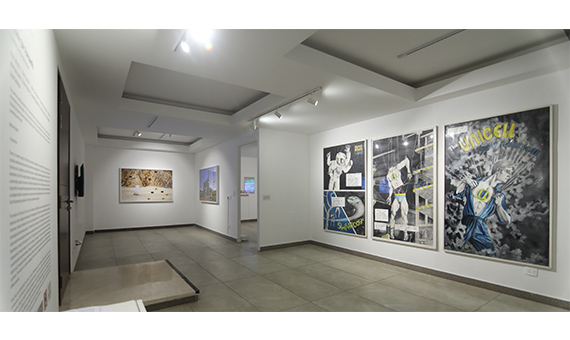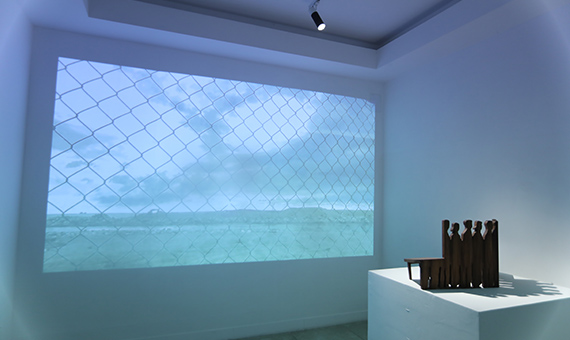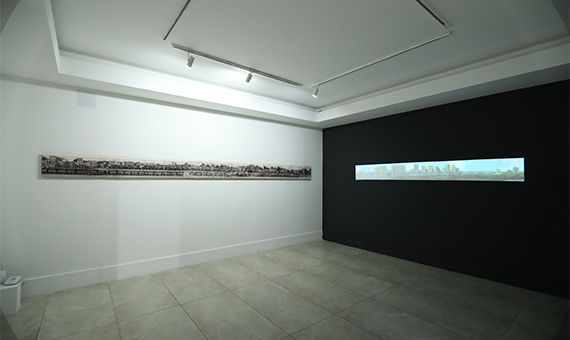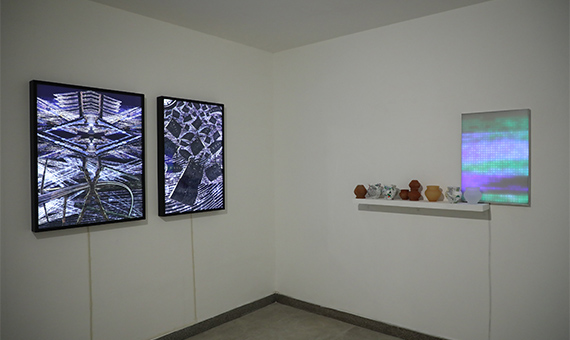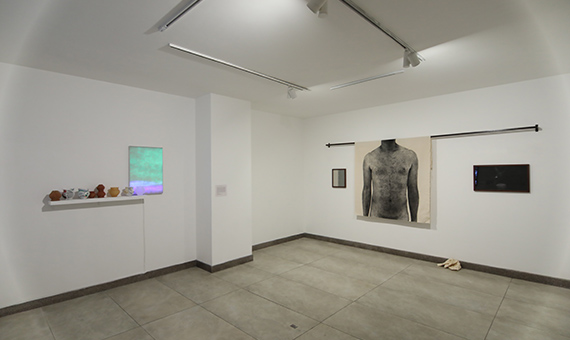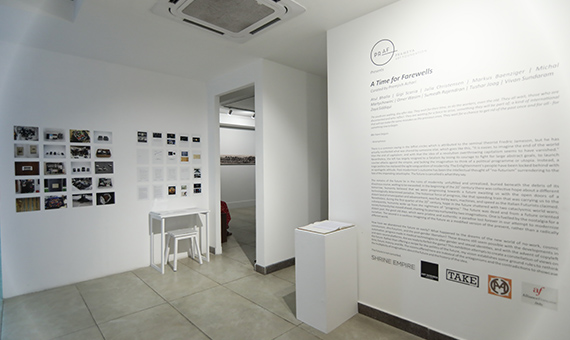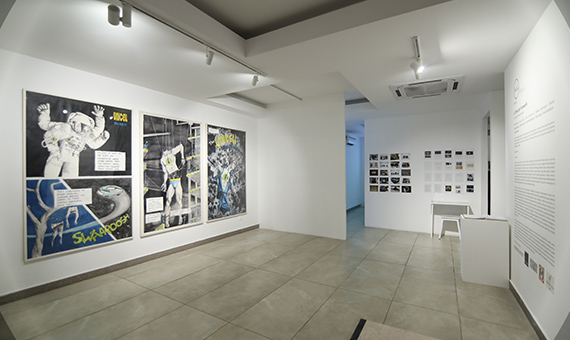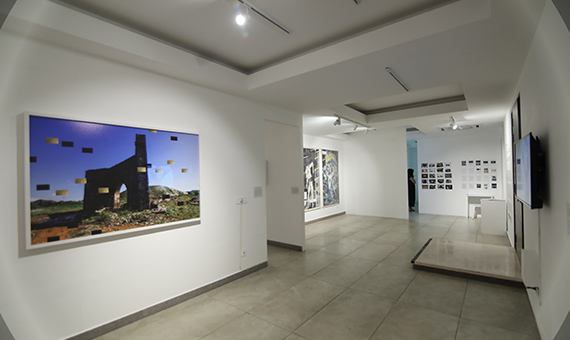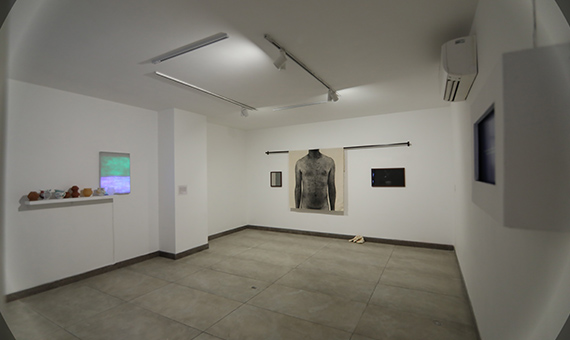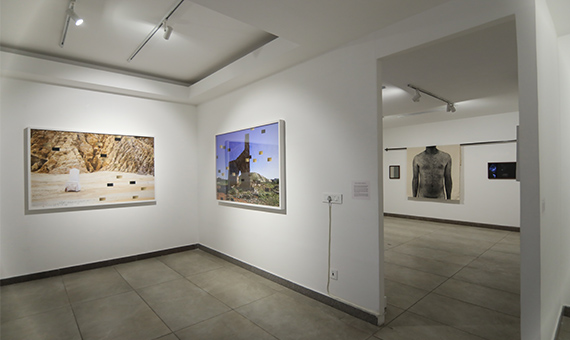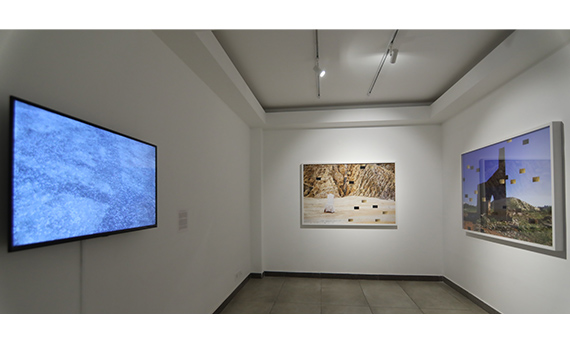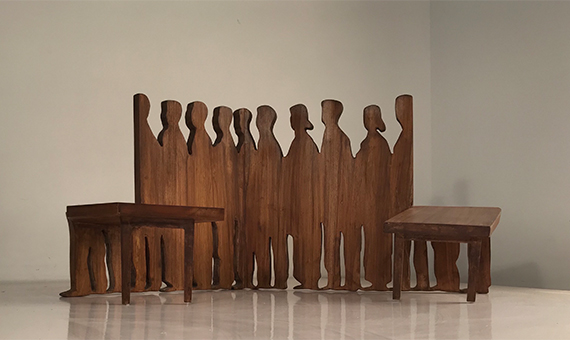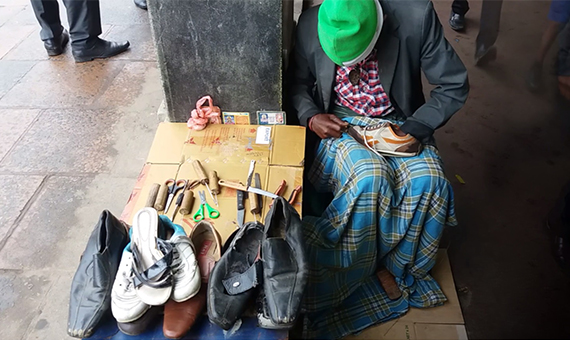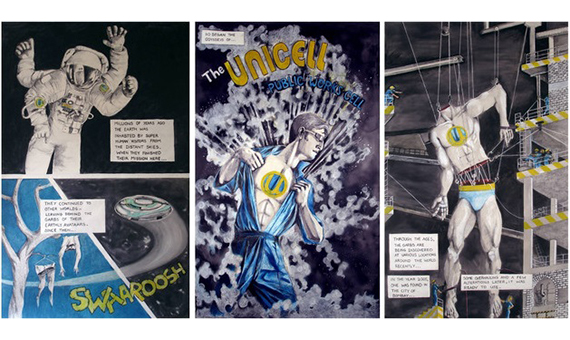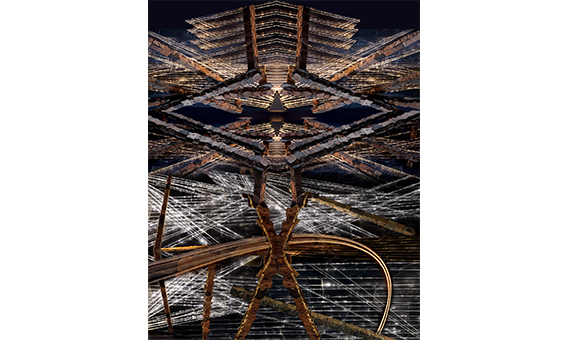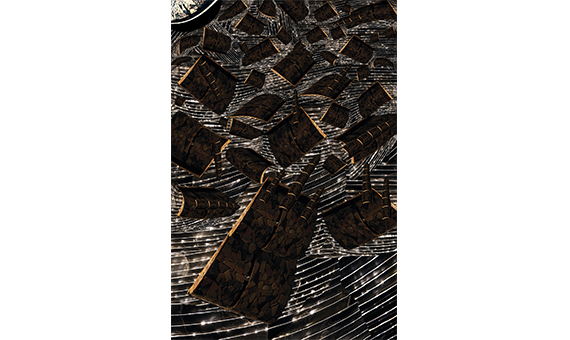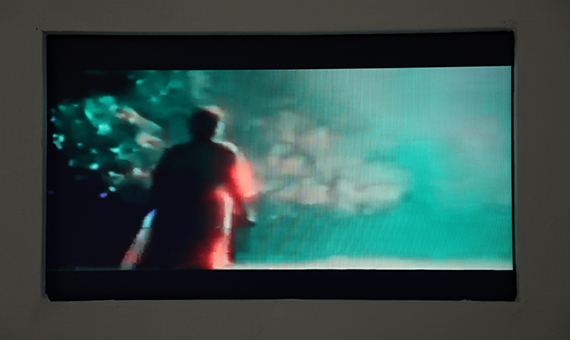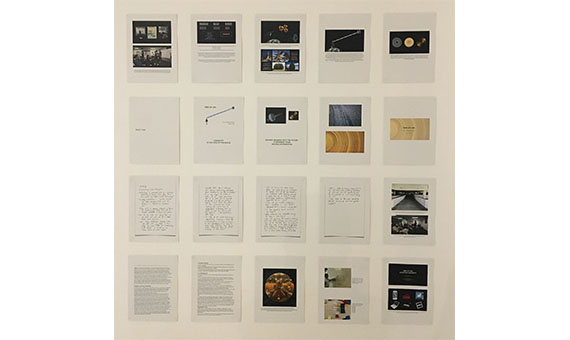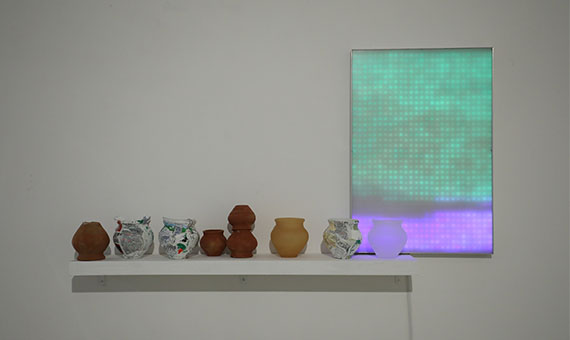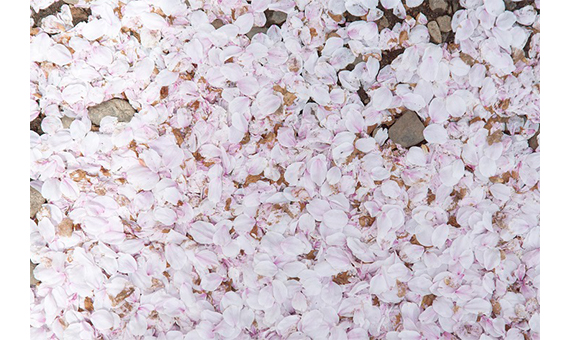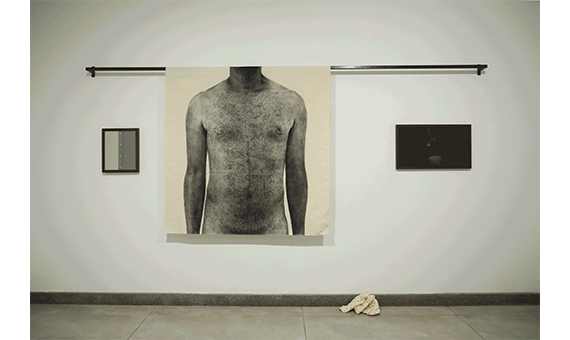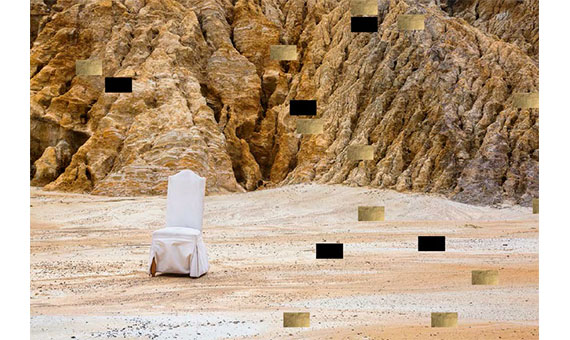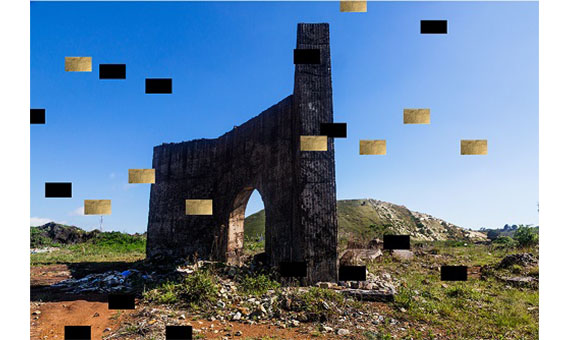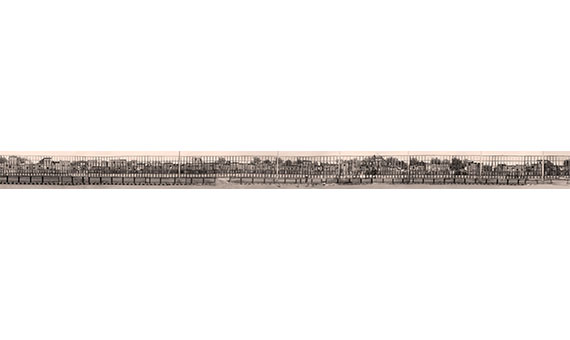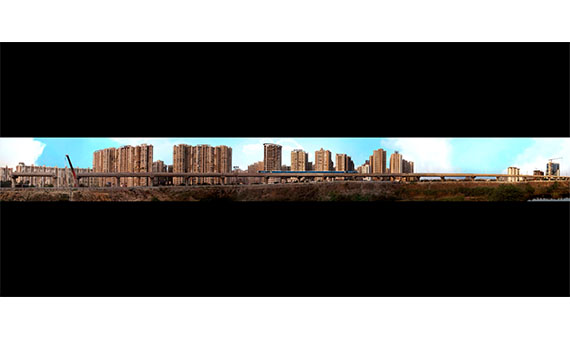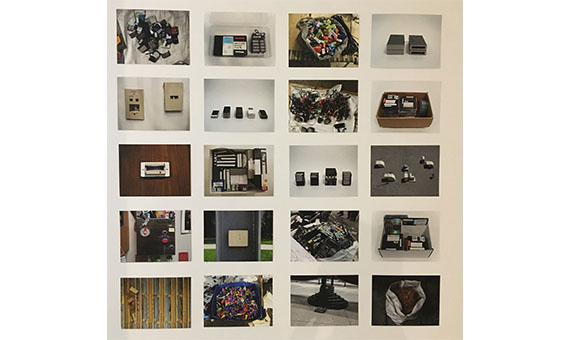About the Artists
Atul Bhalla
Atul Bhalla completed his bachelor’s in Fine Arts from the College of Art, University of Delhi, and his master’s in Fine Arts from the School of Art, Northern Illinois University, USA. Bhalla is a conceptual artist working with environmental issues, particularly those surrounding water, for more than two decades. His work invites audiences to engage directly with urban and metropolitan spaces, and in particular water resources, in his city New Delhi as well as those he visits during the course of international exhibitions and residencies. In his engagement with the eco-politics of water, Bhalla has been pushing for various thematic links through his multifaceted practice. Primarily using photography the artist explores histories and associative meanings of sites of everyday living, building narratives through performance and many times using text as well.
His work ‘Yamuna Walk’ was part of the traveling exhibition Walk On: From Richard Long to Janet Cardiff – 40 years of art-walking at MAC Brimingham. He has also participated in the Yamuna Elbe Project, a project about two rivers – Elbe in Hamburg and the Yamuna in Delhi in 2011–12.
He has participated in various solo shows, including a solo installation at Harvard Art Museums, MA, USA (2016); the Accademia Filarmonica Romana, Rome, Italy (2016); SepiaEYE, New York, USA (2015); Vadehra Art Gallery, New Delhi (2011, 2015); Lafayette College, Philadelphia, USA (2011); Project 88, Mumbai (2009); Aicon Gallery, London (2008); among others. His group shows include the Kuala Lampur Biennale in 2017; SepiaEYE, New York (2017); Bikaner House, New Delhi (2017); the National Gallery of Modern Art, New Delhi (2016); the Stephen D. Paine Gallery. Massachusetts Institute of Art and Design, USA (2015); Sunaparanta, Goa (2015); to mention a few.
He has published two books on his performance works, Yamuna Walk by University Washington Press, and What Will Be my Defeat by Galerie für Lanschaftskunst Hamburg (GFLK).
The artist lives and works in New Delhi.
Gigi Scaria
Born in 1973 in Kothanalloor, Kerala, Gigi Scaria completed his bachelor’s degree in Painting from the College of Fine Arts, Thiruvananthapuram, in 1995, and his Master’s degree in the same from Jamia Millia University, New Delhi, in 1998.
Gigi Scaria’s work draws the viewer’s attention towards the painful truths of migrancy and displacement. The issue of non-belonging and unsettlement reverberate between the walls on his canvas. “Gigi’s particular position is to investigate how city structures, social constructs, and the view of location is translated in social prejudice and class attitude,” says critic and curator Gayatri Sinha.
Scaria’s solo shows include ‘Absence of an Architect’ at Palette Art Gallery, New Delhi, in 2007; ‘Where are the Amerindians?’ at Inter America Space, Trinidad, in 2005 following his residency at CCA7 there; the Art Inc., New Delhi, in 2001; and Great Art Gallery, New Delhi, in 1998. Amongst his group shows, the most recent include, ‘Popular Reality’ at the Stainless Gallery, New Delhi, Jam Jar, Dubai, and Clark House, Mumbai, in 2008-2009; ‘Keep Drawing’ at Gallery Espace, New Delhi; ‘Walk On Line’ at Avanthy Contemporary, Zurich; ‘Indiavata (India + Avatar): Contemporary Artists from India’ at Gallery Sun Contemporary, Korea; ‘Young Contemporary Indian Artists’ at 1x1 Gallery, Dubai; ‘Click! Contemporary Photography in India’ at Vadehra Art Gallery, New Delhi; and ‘Who Knows Mr. Gandhi ?’ at Aicon Gallery, London, all in 2008. Scaria also completed residencies in Biella, Italy in 2002 and New Delhi in 2004. In 2005, the artist was honoured with the Sanskriti Award in Visual Art. Scaria lives and works in New Delhi.
Julia Christensen
Julia Christensen is an artist and writer whose work explores systems of technology, time, change, and memory. Christensen has been awarded the Guggenheim Fellowship (Fine Arts, 2018), LACMA Art + Tech Lab Fellowship (2017-2018), Creative Capital Fellowship (Emerging Fields, 2013), MacDowell Fellowship (2015), and the Ohio Arts Council Individual Excellence Award (2015). She has been awarded artist residencies at the MacDowell Colony, Wexner Center for the Arts Film + Video Studio, Media Archaeology Lab, and the Experimental Television Center. Her work has been exhibited at the Los Angeles County Museum of Art (Los Angeles, CA), Walker Art Center (Minneapolis, MN), Ronald Feldman Fine Arts Gallery (NYC, NY), Museum of Contemporary Art Cleveland (Cleveland, OH), the Carnegie Museum of Art (Pittsburgh, PA), and internationally. Christensen is the author of Big Box Reuse (MIT Press, 2008), which talks about how communities are reusing abandoned Walmart and Kmart stores in the US. Big Box Reuse won several prestigious book awards, including the American Association of Academic Press’s Book of the Year Award in the category of trade non-fiction. Her forthcoming book, Upgrade Available (Dancing Foxes Press), is a product of her long-term art/research project about how “upgrade culture” impacts life on a range of time scales. Christensen is Associate Professor of Integrated Media in the Studio Art Department at Oberlin College.
Markus Baenziger
Markus Baenziger is a Swiss born artist living and working in Brooklyn, NY. After receiving his BFA from Parsons School of Design in New York City, he attended the graduate program at Yale University, where he received his MFA in sculpture. He is a full-time professor at Haverford College in Haverford, Pennsylvania.
His work is represented by the Edward Thorp Gallery in New York City, where he had several one-person exhibitions. He had additional solo exhibitions at the List Gallery at Swarthmore College; the Cantor Fitzgerald Gallery at Haverford College; the Louise Jones Brown Gallery at Duke University; Bonakdar Jancou Gallery, NYC; Tanya Bonakdar Gallery, NYC; and Cohen Gallery, NYC. His work has also been featured in select group exhibitions at the Rose Art Museum; the Walker Art Center; the Walton Arts Center in Fayetteville, Arkansas; the Yale University Art Gallery; the Contemporary Art Museum, Tampa FL; the Hillwood Art Museum, Brookville, NY; the Florida Atlantic University Gallery; the Swiss Institute; Zabriskie Gallery; WithSpace Gallery in Beijing, China; and C/O Gallery in Oslo, Norway, among others.
Markus Baenziger is a recipient of the John Simon Guggenheim Memorial Foundation Fellowship award. He also received the State of Connecticut Commission on the Arts artist fellowship, and a Yale Norfolk Fellowship in sculpture. He was awarded an artist residency fellowship at the Bemis Center for Contemporary Art, and he received the Haystack Mountain School of Crafts Summer'14 Open Studio Residency award, and the Weir Farm Artist Residency award at the Weir Farm National Historic Site in Wilton, CT. Most recently he received a Hambidge Center for the Creative Arts & Sciences Artist Residency award and fellowship, and he was awarded a residency at the La Napoule Art Foundation Residency Program in Mandelieu La Napoule, France.
His work has been widely reviewed, including reviews of his solo exhibitions at the List Gallery and at the Cantor Fitzgerald Gallery in the Philadelphia Inquirer. Additional reviews of his work appeared in Artforum, Art in America, Arts & Antiques, Sculpture Magazine, the New York Times, the New York Sun, the Art Newspaper, the Village Voice, and others.
His work can be found in the collections of the Walker Art Center, MN; the Agnes Gund Collection, NY, and numerous private collections.
Michal Martychowiec
Michal Martychowiec (born in 1987) creates conceptual series of photographs, films, drawings, neons, objects, mixed media installations and environments. He is a visiting lecturer at China Academy of Art in Hangzhou. He lives and works in Berlin.
Martychowiec’s oeuvre consists of mixed media practice designed in larger series. It is thus always developed hermeneutically around an expanded topic. A new field of his invention is also recreation of avatars and other personas.
Through this practice, characterised by the diversity of the media used, Martychowiec aims to explore the condition and the possibilities of contemporary human existence. His thinking revolves around history, invention and autopoiesis of historical narratives, and thus also exploration and occasionally comical recomposition of cultural symbols and archetypes.
Furthermore, Martychowiec merges artistic and curatorial practices through a twofold arrangement of his oeuvre. At first, he develops projects as individual narratives within a certain field of inquiry. At the same time, these projects inform one another and their elements can be reenacted and incorporated, through a curatorial activity, into later works, where they acquire symbolic qualities.
Martychowiec’s inventions are based primarily on Occidental and Oriental philosophy, anthropology, art and cultural history, universal historical reflections, the history of religion, literature, archeology and, of course, our contemporary culture and communication analysis.
Omer Wasim
Omer Wasim is a multidisciplinary artist and art writer based in Karachi. His solo practice is anchored around the subversive potential of queerness, which he applies to urban and developmental milieus, as well as their effects on, and interactions with, nature. His collaborative practice with Saira Sheikh aims to reconfigure, re-articulate, and disrupt existing and complacent modes of artistic engagement and production. He teaches at the Indus Valley School of Art and Architecture; serves on the Editorial Board of Hybrid, and will edit its third issue. He graduated with a BFA in Interdisciplinary Sculpture with a concentration in Video and Film Arts, and an MA in Critical Studies from the Maryland Institute College of Art in Baltimore, Maryland, USA.
His collaborative works have been shown at the Dhaka Art Summit (2018); Rossi & Rossi, London (2018); Gandhara-Art Space, Karachi (2018); Aicon Gallery, New York City (2018); Karachi Biennale (2017); Cairo Video Festival (2017); and CICA Museum, Gimpo (2016).
Sumedh Rajendran
In each of Rajendran’s works of art, the artist makes a ‘conscious decision’ to raise awareness about the ‘sad state of affairs’ around him. His sculptures amalgamate various fundamental forms such as animals, objects and humans, resulting in hybrid species that break downs all preconceived notions one may have while categorizing anything into a ‘type’. His use of industrial materials such as ceramic tiles, steel, iron and other unbending resources also breaks barriers by transforming tough, primal materials into the organic forms that make up his installations.
Born in 1972 in Trivandrum, Kerala, Sumedh Rajendran completed his Bachelor’s degree in Sculpture from the College of Fine Arts in 1994, and obtained his Master’s degree from the Delhi College of Art in 1999. He has several exhibitions to his credit. His solo shows include 'Chemical Smuggle’ at Vadehra Art Gallery, New Delhi, in 2008; ‘Final Call’ at Anant Art Centre, New Delhi, in 2008; ‘Street fuel Blackout’ at Sakshi Gallery, Mumbai, in 2006; and ‘Pseudo-Homelands’ at Rohtas Art Gallery, Lahore, in 2005. Amongst his most recent group endeavors are 'Urban Spiel: A Study of Sculpture and Material' at Bodhi Art, Berlin; 'The Sun Rises In The East: Contemporary Art From India' at Galerie Christian Hosp, Austria; 'Everywhere Is War (And Rumors of War)' at Bodhi Art, Mumbai; 'Indi Genius' presented by Sakshi Gallery and Soka Contemporary Space, Taipei, at Sakshi Gallery, Mumbai; 'Link' at Sakshi Art Gallery, Mumbai; ‘Shifting Terrains/Altered Realities’ at the Shrine Gallery, New Delhi; all in 2008; ‘Maarkers’ at Bodhi Art, Mumbai, in 2006; ‘Paper Flute’ at Gallery Espace, New Delhi, in 2006; and ‘Are We Like This Only’ at Vadehra Art Gallery, New Delhi, in 2005.
Rajendran has also participated in various residencies across South Asia including Khoj, New Delhi, and the Teertha International Artist Residency, Colombo, Sri Lanka.
Tushar Joag
Tushar Joag (1966-2018) was born in Mumbai. He completed his Bachelors in Fine art in 1988 (Sir JJ. School of Art, Mumbai) and Masters in 1990 (M.S. University, Baroda). After spending two years (1998 to 2000) at the Rijksakademie van Beeldende Kunsten, Amsterdam, The Netherlands, he returned to Mumbai and co-founded the artists initiative Open Circle in 2000. He had been involved in organizing and coordinating activities in Mumbai and for the World Social Forum in Brazil and Kenya. He participated in a number of national and international exhibitions. He had been a Visiting Faculty, and had delivered numerous talks and seminars in India and abroad on invitation. He had been a member of jury for various awards and academic examinations in prestigious institutions. He had been part of numerous exhibitions at the national and international level of which some important ones are 'Chalo! India: A New Era of Indian Art', National Gallery of Contemporary Art, Korea, curated by Akiko Miki, The Empire Strikes Back: Indian Art Today - The Saatchi Gallery, London, 'Cultural Hijack', curated by Benjamin Parry and Peter McCaughey, Architecture Association, London. He was the Assistant Professor, Department of Art and Performing Art and also one of the founding faculty members of the department. He was also the Advisor of Art1st Foundation and a mentor for its various art education programmes.
Vivan Sundaram
Vivan Sundaram (born 1943 in Shimla) lived in Delhi. He studied painting at the Faculty of Fine Arts, MS University of Baroda (1961-65) and at Slade School of Art, London (1966-69), where he also studied History of Cinema. Active in the students’ movement of May 1968, he helped set up a commune in London and lived in it till 1970. On his return to India in 1971, he worked with artists’ and students’ groups to organize events and protests, especially during the years of the National Emergency. In the 1980s, Sundaram did three large shows of narrative painting and participated in the seminal group exhibition, ‘Place for People’ (1981). Since 1990 he made installations that include sculpture, photographs and video. The installation Memorial (1993-2014) referred to the communal violence in Bombay. A monumental site-specific installation at the Victoria Memorial, Calcutta, now referred to as History Project (1998), was accompanied by the documentary Structures of Memory. Continuing work on the family of Amrita Sher-Gil (based on photographs taken by Umrao Singh Sher-Gil) include the installation The Sher-Gil Archive (1995) and a set of digital photomontages, Re-take of ‘Amrita’ (1991 -92). A series of exhibitions using found objects include Trash (2008), an installed urbanscape of garbage, digital photomontages, and the videos Tracking (2004), Brief Ascension of Marian Hussain (2005) and Turning (2008). Discarded and found materials were used to make garments, and the work crossed over into fashion and performance in Gagawaka (2011) and Postmortem (2013). In 2012, Black Gold, an installation of potsherds from the excavation site of Pattanam in Kerala, was made into a three-channel video. These potsherds formed the basis of terraOptics (2016), digital photographs.
Zoya Siddiqui
Zoya Siddiqui (1990) is a visual artist based in Lahore and Vancouver, working primarily in video, performance and installation. She is represented by Shrine Empire Gallery in New Delhi and has been part of international residencies at the Vasl Artists’ Collective Karachi, Theertha Performance Platform in Colombo, In-Situ UK, Delfina Residency UK, and Triangle Arts Association New York. Her works have been shown internationally on platforms such as the Dhaka Art Summit and India Art Fair. Recent exhibitions include Parentheses in New York, Bild-Build in Philadelphia, The Edge in New Delhi and Slow in New Delhi.
Siddiqui recently completed her MFA at UPenn with the Lawrence Shprintz Award and the Fulbright scholarship.

